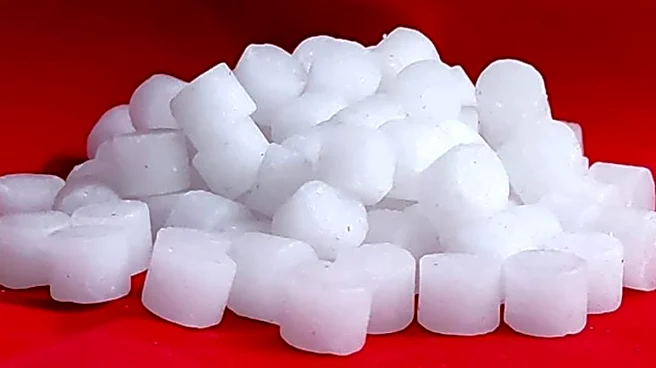The festive season is in full swing across the country, and during this time, homes are filled with rituals such as pujas, havans, and other religious ceremonies. One essential item used in these practices
is camphor. With just a single touch of a match, it ignites instantly and releases a soft, fragrant aroma that fills the space.
But have you ever wondered how camphor is made, what the plant looks like, and why it burns so readily? Let’s explore.
How Is Camphor Made?
There are two main types of camphor available in the market: natural camphor and synthetic camphor, the latter produced in factories.
Natural camphor comes from a tree known as the camphor tree, scientifically called Cinnamomum camphora. This tree can grow up to 50-60 feet in height, with rounded leaves roughly 4 inches wide. Camphor is derived from the bark of this tree.
When the bark begins to dry or turns greyish-brown, it is removed from the tree. The bark is then heated, refined, and ground into powder. This powder is later moulded into various forms for use.
Origin And History Of The Camphor Tree
The camphor tree is believed to have originated in East Asia, particularly in China, although some botanists consider it native to Japan. During the Tang Dynasty (618-907 AD), a type of ice cream made using camphor gained popularity in China. The tree was also widely used in traditional Chinese medicine.
By the 9th century, the method of extracting camphor through distillation had begun, and its use gradually spread around the world.
According to a report by goya.in, by the 18th century, the island of Formosa (modern-day Taiwan) had become the largest producer of camphor. At the time, Formosa was under the rule of the Qing Dynasty, which had established a strict monopoly over the island’s forests, including camphor production. Touching the tree without permission was considered a serious offence — in 1720, around 200 people were executed for violating these rules.
The monopoly ended in 1868, but when Japan took control of Taiwan in 1899, it imposed similar restrictions. Around this period, synthetic camphor was first developed.
Introduction Of The Camphor Tree In India
India also made attempts to grow camphor-producing trees. In a 1932 research paper, scientists RN Chopra and B Mukherjee from the School of Tropical Medicine in Calcutta noted that in 1882-83, camphor trees were successfully cultivated at the Horticulture Garden in Lucknow. However, the success was short-lived.
Over time, more sustained efforts were made, and cultivation of camphor trees expanded to various parts of the country.
Why Is The Camphor Tree Called ‘Black Gold’?
The camphor tree is sometimes referred to as Black Gold due to its high value. It not only produces camphor used in religious rituals, but also yields other valuable substances such as essential oils, medicinal compounds, perfumes, and soaps.
The tree contains six specific chemotypes — chemical variants that determine its properties. These are: camphor, linalool, 1,8-cineole, nerolidol, safrole, and borneol.
Why Does Camphor Ignite So Easily?
Camphor is made up of a high proportion of carbon and hydrogen, which gives it a very low ignition temperature. This means it requires only minimal heat to catch fire.
Moreover, camphor is highly volatile, and when slightly heated, it releases vapours that quickly mix with air. These vapours ignite easily upon contact with oxygen, which is why camphor lights so readily with just a spark.


/images/ppid_a911dc6a-image-176084485896567373.webp)












/images/ppid_59c68470-image-176070756844262127.webp)
